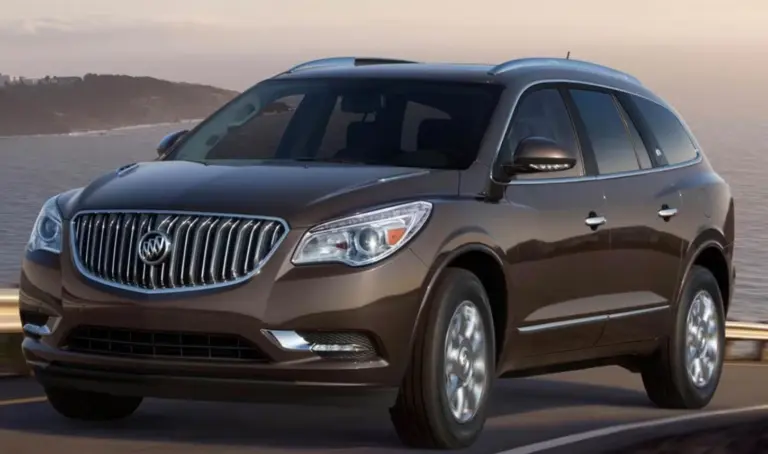Subaru Outback Years to Avoid (Updated)
The Subaru Outback is a favorite among adventure seekers and families due to its practicality and dependability. With its spacious interior, all-wheel-drive system, and versatile performance, it’s an appealing choice for many drivers. But, there are some Subaru Outback Years to Avoid.
Not all model years of this car deliver the same reliability. Over time, some Outback years have encountered recurring issues that can be costly or inconvenient to address.
If you’re considering purchasing a used Subaru Outback, understanding which years to approach cautiously is essential. By avoiding problematic years, you can save time, money, and unnecessary stress.
Subaru Outback Years to Avoid
While the Subaru Outback is a trusted name in the crossover SUV market, some model years are best avoided due to recurring issues. Identifying these problematic years can help you steer clear of costly repairs and headaches.
| Model Year | Key Issues |
|---|---|
| 2010–2011 | Transmission problems, torque converter failures |
| 2013 | Excessive oil consumption, piston ring defects |
| 2015 | Infotainment system malfunctions, electrical faults |
| 2018 | Windshield cracking, battery performance issues |
| 2019 | Continued windshield cracking, engine recalls |
2010–2011 Models
These years are plagued by transmission problems, including torque converter failures that lead to vibrations and strange noises. Additionally, some owners reported premature engine wear. Repairs for these issues are often expensive and time-consuming, making these models less desirable for buyers seeking reliability.
2013 Model
The 2013 Outback is infamous for its excessive oil consumption. Faulty piston rings allow oil to leak into the engine’s combustion chamber, leading to frequent refills and potential engine damage if neglected. This issue has made the 2013 model a risky choice for prospective buyers.
2015 Model
The 2015 Outback faces electrical system faults, especially with its infotainment and dashboard electronics. Owners have reported frequent glitches, frozen screens, and unexpected failures, which significantly affect user experience and require repeated service visits.
2018–2019 Models
More recent models, like the 2018 and 2019 Outbacks, have had issues with windshield cracking and battery problems. These concerns might seem minor, but they can become recurring expenses over time, particularly if the vehicle is out of warranty.
Common Issues in Certain Model Years
When considering a used Subaru Outback, it’s crucial to understand the common problems reported by owners over the years. While many Outback models offer excellent reliability, certain years have faced recurring mechanical or electrical challenges. Knowing these issues can help you avoid unexpected repair costs and frustration.
Excessive Oil Consumption
One of the most widespread complaints involves excessive oil consumption, especially in the 2013 Outback. This issue often stems from defective piston rings that allow oil to leak into the combustion chamber.
As a result, owners frequently find themselves adding oil between scheduled changes, which is both inconvenient and costly. Left unaddressed, this problem can lead to severe engine damage over time.
Transmission Problems
The 2010 and 2011 Outback models are notorious for transmission issues. Many owners reported torque converter failures, causing the vehicle to vibrate or make unusual noises while driving.
These problems often require expensive repairs or a complete transmission replacement, making these years less desirable.
Electrical System Faults
Electrical issues can be frustrating, and the 2015 Outback is a prime example. Problems with the infotainment system and dashboard electronics often leave owners seeking frequent repairs.
These malfunctions not only impact convenience but can also lower the car’s resale value.
Frequently Asked Questions (F.A.Q)
What are the best Subaru Outback years to consider?
While some Outback years have faced challenges, others are known for their reliability. Models from 2005 to 2009 are praised for their sturdy build and consistent performance. Additionally, the 2021 and 2022 models feature modern technology and improved durability, making them excellent options for buyers seeking a worry-free experience.
How can I identify if a used Outback has these issues?
The best way to avoid surprises is by reviewing the vehicle’s maintenance history. Look for regular servicing and repairs, particularly for common problems like oil consumption and transmission faults. A pre-purchase inspection by a trusted mechanic can also help uncover hidden issues, ensuring you’re not inheriting expensive repairs.
Are there any recalls for the problematic years?
Yes, Subaru has issued recalls for certain Outback models to address known defects. These recalls often target issues like faulty transmissions, engine components, or electrical systems. To check if a specific vehicle is affected, use its Vehicle Identification Number (VIN) on Subaru’s recall lookup tool or contact a local dealer.
Should I avoid all models from these years?
Not necessarily. If you find a well-maintained vehicle with updated parts or repairs addressing known issues, it could still be a good purchase. However, it’s essential to proceed with caution and conduct thorough research before committing.
Wrapping Up
The Subaru Outback is a versatile and reliable vehicle, but like any car, some years come with more challenges than others. Knowing which models to approach cautiously ensures you avoid potential problems like excessive oil consumption, transmission issues, or electrical faults. By steering clear of problematic years such as 2010–2011, 2013, 2015, and 2018–2019, you can save yourself from unexpected expenses and stress.
| Read Also |
| Chrysler Pacifica Years to Avoid |







